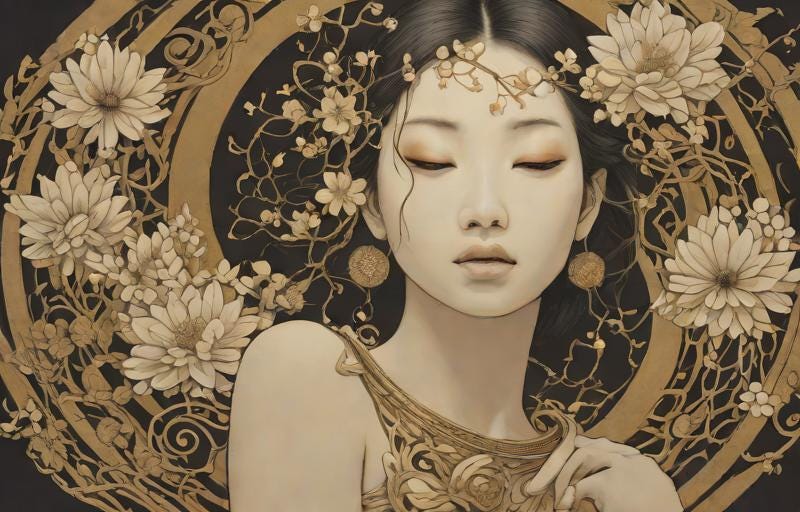Introduction
This verse plays on pre-historic Chinese cosmology. Like all cosmology, it is valid as a subjective experience for the person living it and a metaphor for spiritual truths. The closest Western parallel I’m aware of is Gaia from Greek mythology. She is the mother who needs no husband; the fertile, primordial essence that emerged from chaos herself and then spontaneously “gave birth” to the spiritual realm in the form of Uranus.
This story is not dissimilar to other forms of emanation or creation stories. God called forth light from the dark depths and set the two apart. From Ginnungagap (the primordial void) emerged Muspelheim (fire) and Niflheim (ice). Ein Sof (limitless nothing) gathered into a point, Keter (Crown), and began the emanation process.
Metaphorically, this likely refers to the great “I AM” (self-reflexive awareness) emerging from Pure Consciousness to create sentience. At this point in our meditation manual, we are still developing a sense of gratitude and awe for this fundamental capacity at the base of our experience.
Translation
The fertility of the spirit is eternal.
The profound and mysterious creatress.
This generative mother’s womb
is the origin of Heaven and Earth.
A Subtle, continuous existence
its functions are inexhaustible.

Commentary
The fertility of the spirit is eternal.
The profound and mysterious creatress.
The verse opens with two characters that literally translate as “valley spirit.” In the mythos, this points to the “Cereal God,” though it can also abstractly point to the primordial womb. Most likely, it’s simultaneously indicating both because they are such related concepts.
These translations are offered freely, and you are encouraged to share them.
Please make the appropriate attributions and refer to this page if you do.
Members and Patrons of the Word have access to the full commentaries.
If you already are either, be sure to Log In
